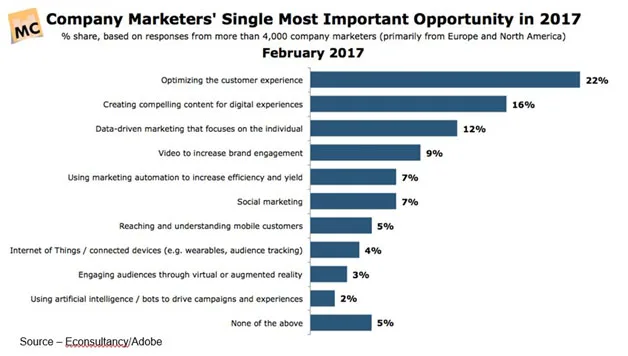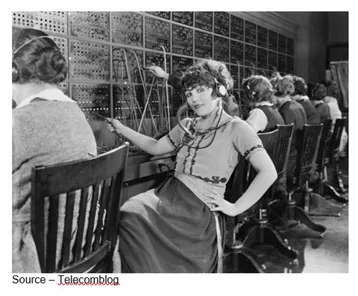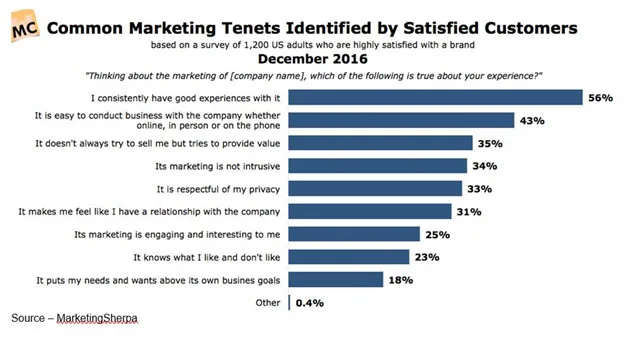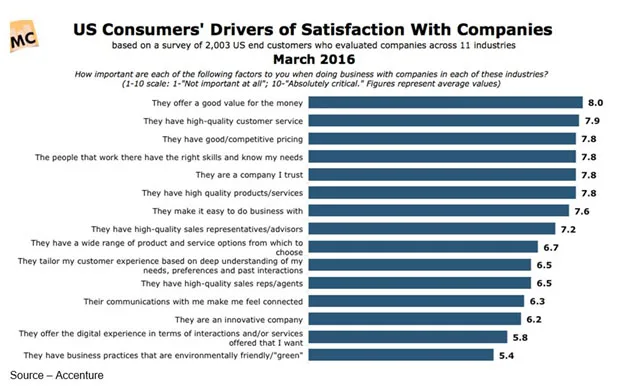Customers are Hard to Win, Harder to Keep

Companies are running so fast today developing new (sometimes even great) technology that they often lose sight of most important part of the firm’s growth … the customer.
But Intel’s Andy Grove (one of the founders and CEO who passed away last year) and Amazon’s Jeff Bezos (founder, CEO, chairman) share a common focus, even though their approaches to solutions were different.
Both had engineering backgrounds but Grove was focused on staying ahead of the technology curve to meet his business customers’ requirements. He was focused on delivering replacements for existing healthy products before competitors did.
One of Grove’s most memorable quotes was, “Success breeds complacency. Complacency breeds failure. Only the paranoid survive.”
Bezos, on the other hand, focused on attacking, replacing existing business models and subtly adding offering on top of offering to strengthen the consumer relationship.
Bezos once observed, “Our customers are loyal to us right up until the second somebody offers them a better service.”
Ask any marketing person and he/she will say that’s obvious.
They’ll tell you the customer is the most important person on the planet and everything they do is done to make him/her satisfied.

It makes a great mission statement, but something gets lost in translation.
To deliver that satisfaction, marketing/support teams implement the latest service tools that promise to make support faster and easier for the customer.
Who’s kidding who?
Customer satisfaction isn’t their domain … it’s an organization-wide issue and needs organization-supported solutions.
The first step in delivering the best in customer service is to be an employee-centric organization.
After all, to have an amazing customer service culture, the company has to have amazing employees.
Herb Kelleher, founder and chairman emeritus of Southwest Airlines, was one of the earliest bosses to promote the idea of employees first. He explained his position by saying, “Employees come first and if employees are treated right, they treat the outside world right, the outside world uses the company’s product again, and that makes the shareholders happy. That really is the way that it works.”
It has worked pretty well for them since 1971 in an industry that rents seats.
What he really said was that good people who are treated/supported properly will do their best to deliver good products/service.
Executives at New Voice Media noted that positive, friendly, helpful employees have a major influence on customer loyalty. And because of that loyalty, 69 percent would recommend the company to others.
It’s not surprising then that 42 percent of the customers said they are prepared to spend more money with these firms.
Regardless, most of the new tools and neat things marketing puts out there aren’t really for the customer.
Nope, they’re designed to make it faster and easier for the company.
Opening every communications channel available so consumers can reach the right person in the firm and get the right answer is only a start.
Customers still go through an endless maze of phone and online guides that make them repeat the same basic information again and again and …
That sorta’ says the customer-centric tools are buffers between real people to streamline things for the firm.

According to Accenture, the tools often get in the way of quality customer service.
Their recent global consumer report found the hurdles to positive experiences have remained common issues for a number of years:
– Having to contact the company multiple times for the same reason (69 percent)
– Having to repeat the same information to multiple people or go through multiple channels (62 percent)
– Dealing with unfriendly, impolite employees (62 percent)
– Dealing with employees or systems that can’t answer the questions (60 percent)
– Being placed on hold for extended periods (60 percent)
Perhaps that’s why New Voice Media found that 44 percent of consumers take their business elsewhere following poor service. In fact, 98 percent have switched once or twice in the last year.
The worrisome point New Voice’s research uncovered was that 53 percent are put off from calling a business because they are afraid they’re not going to immediately connect with a real person.
So, they switch even before reaching out for assistance to resolve the problem because companies have so automated their systems customers won’t even try.

A few firms like Citibank, Geico, OWC and others have recognized and highlighted this concern in their marketing efforts.
On their websites and in their marketing efforts they emphasize that when you call you’ll immediately talk with a real person who will stick with you and work with you to resolve the situation.
If the call is made in off hours or support people are tied up, they ask you to leave your call-back information and they will call you.
And they do!
People prefer this personalized contact to resolve product/service complaints (84 percent), get a quick answer to questions (61 percent) or get an unbiased view or recommendation (55 percent).

Consumers are already a little stressed out when they find they need assistance with a firm’s product/service. They don’t need to be kept on hold or go through a support maze because of your poorly designed business processes.
The support experience shouldn’t be a frustrating, time-wasting exercise in futility or endurance.
Companies have to be more concerned with the way customers feel because technology (social media) has made it much easier to praise (or pan) the organization.
Historically, customers told 5 people when they had a good experience and 24 when they had a bad service experience.
Today, when they have a positive or not-so-positive experience the first place they go to voice their praise or complaint is online.
Instantly, “the world” knows how the individual feels about the level of service provided.
Ouch!
That’s why it is increasingly important for organizations to listen to customers – no, I didn’t say monitor what they’re doing, I said listen.
That means promptly, courteously acknowledging the individual, summarizing and responding back to the person and thanking them for positive service comments/feedback. And when problems are raised, resolve them immediately.
Keep the response conversational, repeatedly addressing the customer personally by name and showing an understanding of the problem’s specifics. All of your team members should have a sound understanding of the products/services and be able to offer simple, practical solutions and even useful tips on how to get the most from the product and avoid future problems.
Friendly, positive assistance, even to the point of taking them offline to a specialist, will reassure the customer that he/she is important and that they are dealing with a company that respects its customers.
Companies that “get it” and understand the importance of delivering a positive experience enjoy strong, positive returns … especially when the social media world is only a few clicks away.

Comparing their customer research responses with MarketingSherpa, InMotion noted that customers who consistently reported good experiences had a strong degree of satisfaction
The second most popular response was that it was easy to conduct business with the company across all communications channels – online, in person, on the phone.
Regardless of the consumer study value; customer service, quality and trust are the core drivers for a customer’s satisfaction. They are far more important than product selection or marketing’s rush to try and develop personalized consumer contact.

Poor service is consistently the major reason for consumers to switch brands/products and 8 out of 10 people surveyed said that their previous product/service provider could have done something to keep them as a customer such as:
– Resolve the issue on the first contact
– Provide better live or in-person customer service
– Offer the same promotional pricing as new customers receive
Even in our increasingly AI (artificial intelligence)-enabled environment, people still prefer dealing with human beings for service/support.
Consumers today are quick to show their satisfaction … and dissatisfaction.
Consumers today can be more pro-active and make their likes/dislikes more widely known – to a much broader audience.
 They may buy your product because it’s a solution; but they are also quick to tell you and others as Deke Thornton did when he said, “What I like and what I need are two different things.”
They may buy your product because it’s a solution; but they are also quick to tell you and others as Deke Thornton did when he said, “What I like and what I need are two different things.”
# # #